Current Location:Home » News Center
Nantong Shelf Factory - How to Choose Heavy Shelf Columns
Nantong Shelf Factory - How to Choose Heavy Shelf Columns
1. Analysis, calculation, and practice have proven that the mechanical performance of the materials used for the column, the design of the mold, and the manufacturing accuracy are the main factors affecting the bearing capacity and stability of the column. The size changes of various hole types have a direct impact on stability, and the local thinning of the material section has little effect on stability.
2. Stability calculation: Although the pillars of the shelves are basically made of thin steel plates cold-rolled, and the cross-section of the pillars is bent multiple times, there will be no local instability phenomenon. However, with the continuous enrichment of the cross-section of the shelves and the application of high-strength steel, the compression pillars develop towards lightweight and thin-walled directions, easily causing overall instability of the pillars. Therefore, the stability of the compression pillar components is more important.
3. Strength calculation: When checking the strength of the columns of the shelves, according to their different loading conditions, they need to be checked separately according to the axial compression component and the compression bending component. The calculation adopts the relevant formulas in the Technical Specification for Cold Formed Thin Wall Steel Structures (GB50018-2002).
Because columns are the main load-bearing components of shelves, their structural shape is relatively complex, and most of them use cold-formed thin-walled steel (which itself has a certain residual processing stress). The load situation is also relatively complex, especially for high-rise shelves, which have multiple layers and heavy loads, making the design of columns cumbersome, verification complex, and the fairness of values directly related to the safety of the structure.
The hole type is usually in the shape of an inverted octagonal, rhombic, or trapezoidal shape, so that the long hole of the column has a small angle with the vertical direction. After the hook is hung, it automatically locks under the weight of the cargo, and the hook is in contact with the long hole of the column, ensuring a better stress state and more stable and safe use. However, the opening of the hook hole has a significant impact on the bearing capacity of the short column of the column. The bearing capacity after opening is 70% to 95% of the bearing capacity without opening, and the impact on small-sized columns is even greater. Therefore, on the premise of satisfying the load-bearing capacity of the crossbeam hook, the size and number of hook holes should be minimized as much as possible to improve the overall load-bearing capacity of the shelf.
There are many long holes (hook holes) and circular holes evenly distributed on the front of the column, which are used to hang the hooks of the crossbeam and install safety pins.
From the perspective of cross-section, there are many types of cross-sectional shapes for columns, but based on the current market distribution, the mainstream profiles are still the basic types of stable image shelves, some of which have relatively simple structures and are mainly used for lightweight shelves; The multilateral rolling structure is relatively complex, and the processing technology is also relatively complex, mainly used for medium and heavy-duty shelves. Other shapes derived from the basic form mainly involve adding bends on longer edges to improve the stiffness and stability of the columns. In detailed design, in addition to considering strength, stiffness, and structural stability, it is generally necessary to also consider the impact of detailed forming processes on the hole shape, the impact of pre processing of billets on product quality, such as the impact of pre punching and bending deformation not on the cold bending roller line on product quality, and the possible deformation of pre punching during the cold bending process. Under the conditions of ensuring the tolerance requirements of the fitting dimensions and the hole spacing requirements, the design of the cross-sectional shape should take into account the requirements of different plate thicknesses, and a fixed bending radius should be used for deformation.
The column is the ultimate load-bearing component of a detachable shelf, and its design is the hub of the entire shelf system, directly related to the safety of the structure and the economy of use. Assembled shelves are mainly composed of basic components such as column pieces and crossbeams, as well as optional accessories such as corner protectors, floor corners, partition braces, partitions, and layer boards (steel plates or wooden boards). The pillar panel is the main load-bearing component of the shelf, with a load capacity of up to 21 tons. With the increase of shelf height and number of layers, the load on the columns is large, and most of them are made of cold-formed punched thin-walled steel, which retains a certain amount of processing stress. The actual stress situation is also relatively complex. Therefore, the design and selection of columns become the hub of the entire shelf system, directly related to the safety of the structure and the economy of use.
| ·Previous:The conditions you need to pay attention to before purchasing |
| ·Next:The difference between partition shelves and crossbeam shelves |
Recommend
- Nantong Shelf Factory | Points to Pay Attention to in Shelf Procurement
- How to estimate the price of heavy-duty shelves in Nantong?
- Why is the development of loft style shelves so rapid?
- How to choose different types of heavy-duty storage shelves
- Let me tell you how to determine the storage shelves
- Storage rack plays an important role in Internet logistics
- What factors affect the price of customized shelves
- Nantong Shelves | How to Perform Surface Treatment on Shelves - Electrostatic Spraying
- The conditions you need to pay attention to before purchasing
- Nantong Shelf Factory - How to Choose Heavy Shelf Columns
 Chinese
Chinese English
English Japanese
Japanese Korean
Korean


 WeChat QR Code
WeChat QR Code